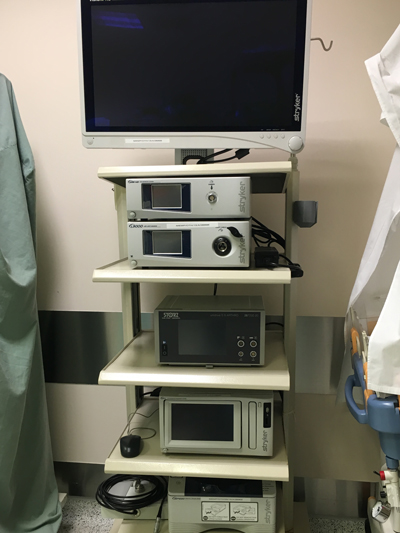Arthroscopy is performed with support of high definition (HD), three-chip CCD camera system and an advanced LED light source, providing detailed images to assist surgeons in all procedures.
Arthritis is a common condition that can be treated using arthroscopy. For instance, synovitis, which involves inflammation of the lining in the knee, shoulder, elbow, wrist, or ankle, can be treated via arthroscopy, as can acute or chronic injuries associated with various joints, such as:
- Shoulder:Rotator cuff tendon tears, impingement syndrome, and Bankart lesions
- Knee:Meniscal (cartilage) tears, chondromalacia (wearing or injury of cartilage cushion), and anterior/posterior cruciate ligament tears with instability
- Wrist: Carpal tunnel syndrome
Although the inside of nearly all joints can be viewed through arthroscopy, six joints are examined with this procedure more frequently. These include the knee, shoulder, elbow, ankle, hip, and wrist. Initially, arthroscopy was simply a diagnostic tool for planning standard open surgery. With development of better instrumentation and surgical techniques, many conditions can now be treated arthroscopically. For instance, most meniscal tears in the knee can be treated successfully with arthroscopic surgery.

FV Hospital’s Joint Centre utilises the modern Stryker arthroscopy system when performing surgeries. Recognised as a revolutionary imaging system, it comprises a commanding imaging platform that features an arthroscope with a 1080p HD programmable camera, a LED light source, an image management system, and an all-in-one tablet-controlled device, which allows surgeons to view live images extremely clearly.
The arthroscope’s camera has a compact, comfortable and ergonomic design that enables optimal angulation. The ultrathin sheathless arthroscope, which measures three to four millimetres in external diameter, facilitates insertion into small joint cavities and provides better observation capabilities for surgeons.
The sheathless arthroscope has revolutionised the way arthroscopic procedures are performed. By eliminating a bulky scope sheath, obturators and switching sticks, viewing portal changes are quick and efficient. The sheathless arthroscope also helps to minimise the time required for surgery.
Dr Phat said: “For patients who do not respond to non-surgical treatment, arthroscopy is an effective option. Almost all of the patients who underwent arthroscopy experience no future complications. With effective support from the modern arthroscopy system, we can perform arthroscopic procedures with higher accuracy and optimise treatment outcome.”



